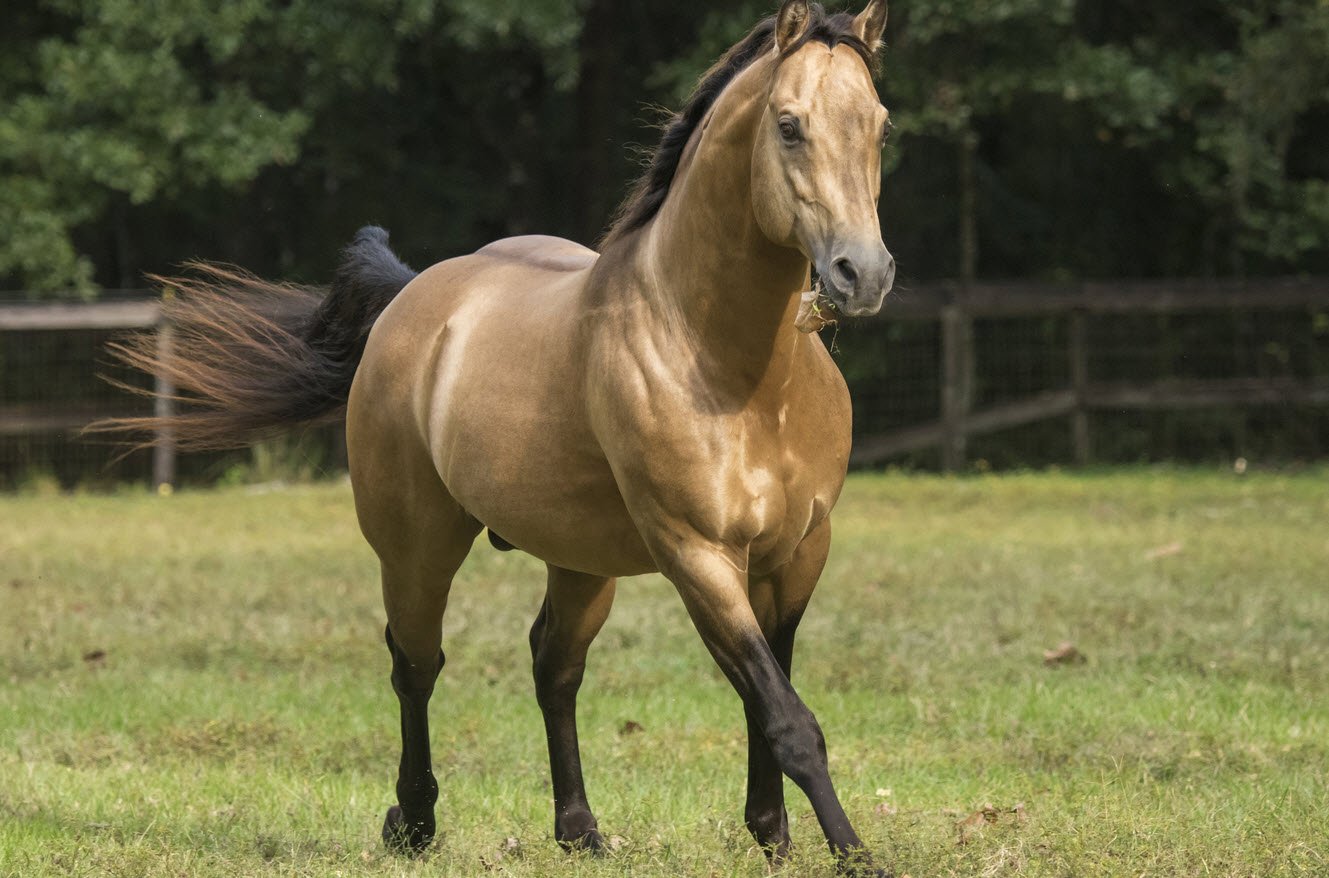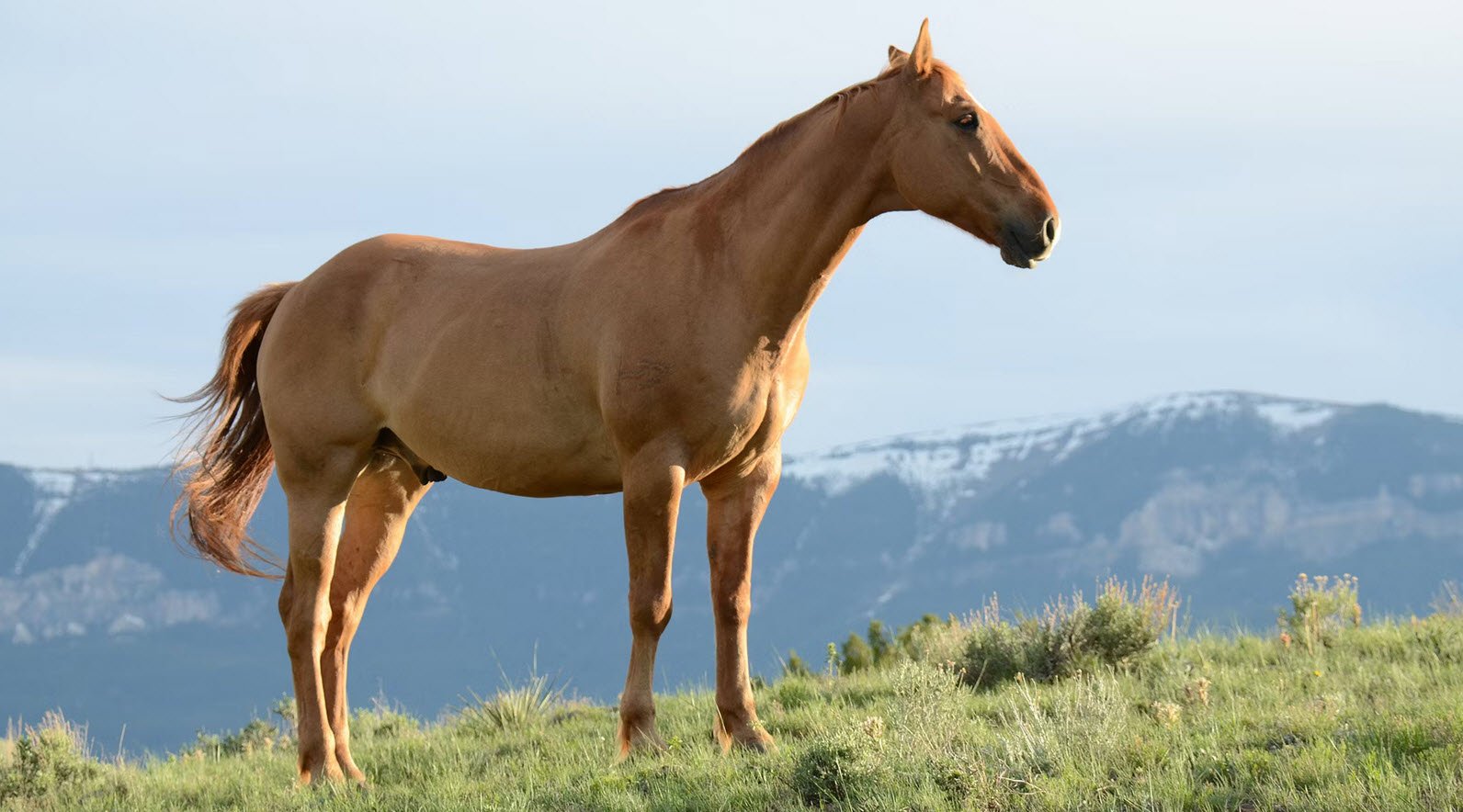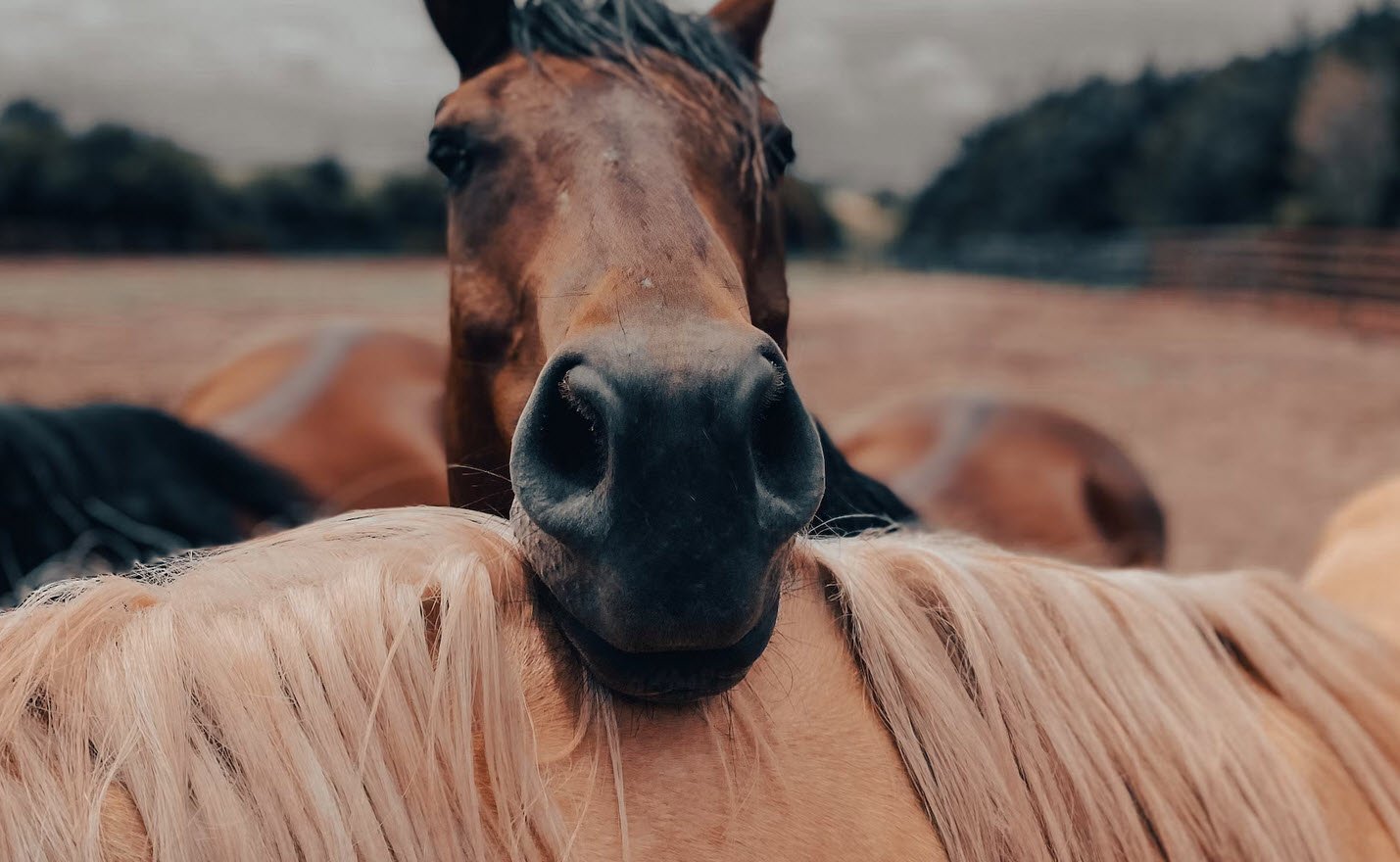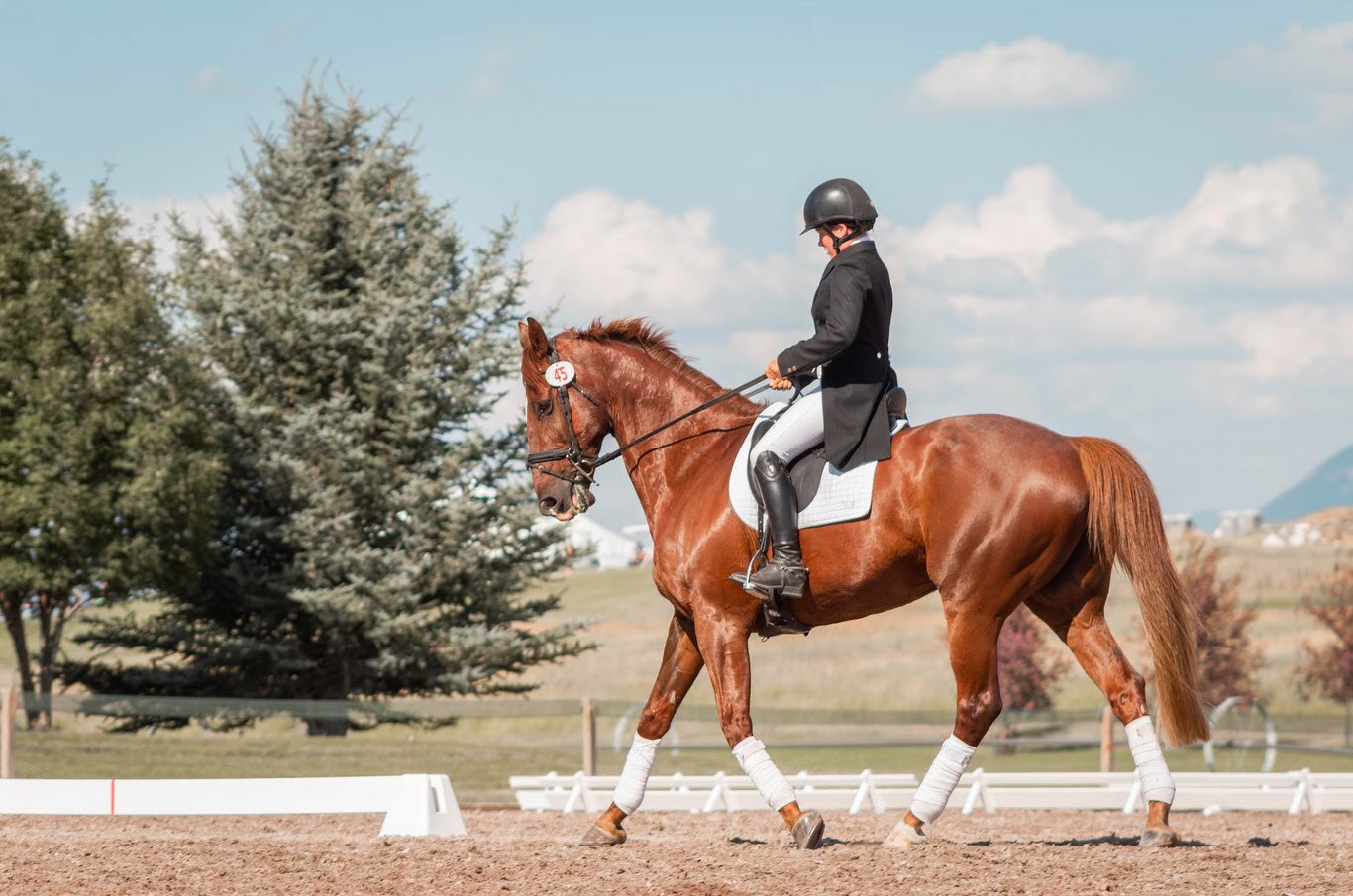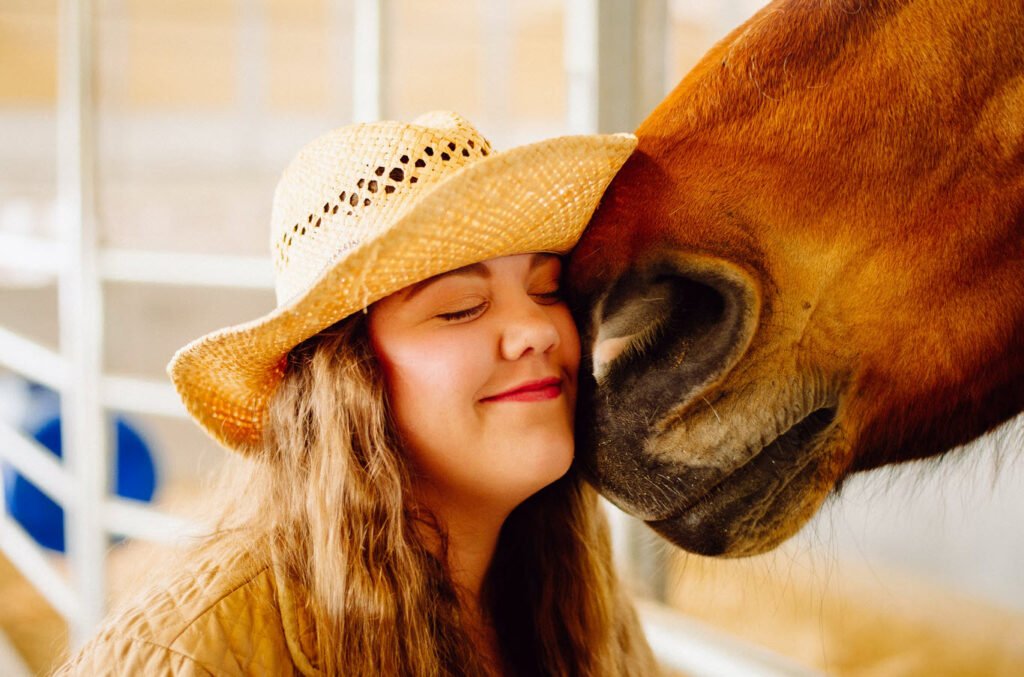
Owning your first riding horse or pony is very exciting. However, looking after your new mount properly requires lifestyle changes and a considerable amount of time commitment and energy. Horses and ponies must be cared for every day of the year. New owners should be aware of the time, financial and other commitments involved. Regular grooming promotes good health and builds a rapport with the horse.
Also Read: The Complete Guide to Horse Care
Before buying a horse, decide what you intend to do with him. How much experience with horses do you have? What size and type of horse/pony will suit you best? Consider what you hope to achieve with your mount. Finally, you and your horse/pony should match each other well.
Approaching the horse
- Always speak to your horse before approaching or touching him. Some horses are likely to jump and may kick out when startled;
- Always approach your horse quietly from the side. If the horse is turned away from you, call to him and encourage him to turn towards you. Never approach your horse directly from the rear;
- Touch the horse by first placing a hand on his shoulder or neck; the touch should be a rubbing action; and,
- Never tie your horse by the reins as he may pull back and injure himself. Always use a headcollar.
Handling the horse
- When working around your horse, wear boots or hard-toed shoes to protect your feet. Never wear runners, soft shoes or go barefoot;
- When working around your horse, tie him securely with a quick-release knot, or have someone hold him with a lead rope. Use cross-ties when possible, but be sure that they have panic snaps or are secured with a breakable tie, such as baling twine;
- Always work close to your horse. If you are near his shoulder, you won’t be struck with the full force of his feet, nor will you receive the full force of a kick if you stay close to the body when you work about the haunches or pass behind your horse;
- Know your horse and his temperament and reactions;
- Be firm and control your temper at all times;
- Always let a horse know what you intend to do. When picking up the feet, for example, do not grab the foot hurriedly as this will startle the horse and may cause him to kick. When lifting the foot, touch the shoulder or hindquarter, and then run your hand down the leg to pick it up;
- Work around a horse from a position as near to the shoulder as possible;
- Never stand directly behind a horse or directly in front of him. To work with the tail, stand to the side, near the point of the buttock, facing towards the rear. Grasp the tail and draw it around to you;
- Be calm and confident around horses. A nervous handler makes a nervous horse;
- Do not tease your horse. Teasing may cause the horse to develop dangerous habits for the rest of his life. Avoid feeding the horse treats from your hand frequently;
- Punish a horse only at the instant of disobedience. If you wait, even for a minute, the horse will not understand why he is being punished. Punish without anger, or your punishment may be too severe. Never strike a horse about the head;
- Check the turnout area for old machinery, broken boards and nails, and poisonous plants and trees. Check fences frequently for loose nails, broken sections and loose wire;
- If leaving a headcollar on a loose horse, the headcollar must be the breakaway type. Leather, though more expensive, is always preferable; if the headcollar is too loose, the horse may catch a foot in it, especially if the horse is trying to scratch his head with a hind foot. A loose headcollar may catch on fence posts or other pasture objects. Some headcollar materials will shrink when wet, so be sure to check the fit regularly; and,
- Check headcollars on young stock daily. As a horse grows, his head grows too, and if the headcollar gets too tight it can cause extreme pain and discomfort.
Leading the horse
When leading your horse, walk beside him – not ahead or behind. A position at the horse’s shoulder is considered safest. Never pull the horse behind you: he may jump forward on top of you;
- Always turn the horse away from you and walk around him;
- Use both hands when leading. If the horse rears up, release the hand nearest to the headcollar so your feet stay on the ground. Do not try to pull the horse;
- It is customary to lead from the left (near side), using the right hand to hold the lead rope and the left hand to take the slack;
- When leading, extend your right elbow slightly towards the horse. If the horse makes contact with you, his shoulder will hit your elbow first and move you away from him;
- A horse should be workable from both sides, even for mounting and dismounting;
- The horse is stronger than you; do not try to out-pull him; never wrap the lead rope or reins around your hand, wrist, or body;
- Never drape a lead rope or reins across your shoulders or neck;
- Do not wear jewellery around horses. Rings can cut deeply into fingers, and bracelets can get caught in the reins or lead rope. Dangling earrings are particularly dangerous;
- Exercise extreme caution when leading a horse through a narrow opening such as a door. Be certain that you have firm control and step through first. Step through quickly and get to one side to avoid being crowded;
- The stirrup irons on a saddle should always be run up when dismounted or leading the horse;
- Use your judgment when turning a horse loose. Lead completely through the gate or door, and turn the horse around, facing the direction from which you have just entered. Then unclip the lead rope or remove the headcollar or bridle. Avoid letting a horse bolt away from you when released. Good habits prevent accidents; and,
- Avoid using excessively long lead ropes – they can become entangled. Watch the coils when using lunge ropes and do not allow them to become entangled.
Tying the horse
- A quick-release knot should be used to tie a horse up. This knot allows the release of the horse quickly and easily should he get into trouble;
- Tie the horse far enough away from strange horses so that they cannot fight;
- Tie the horse with a rope long enough to allow comfortable movement but short enough to avoid becoming tangled or allowing the horse to get a foot over the rope;
- Never tie your horse by the reins as he may pull back and injure himself. Always use a headcollar;
- Never tie a horse directly to a fixed object such as a gate, fence, metal ring or trailer. If a horse pulls back he can panic and do a lot of damage to himself; and,
- Always tie the lead rope to a piece of string attached to the fixed object. This way, if the horse does pull back, the string will break under the strain.
Grooming your horse/pony
Daily grooming of your horse is important for several reasons:
- Regular grooming promotes good health – dust and dirt can cause skin diseases and infections;
- During grooming, the handler has the opportunity to inspect the horse for any wounds or injuries;
- Grooming improves the horse’s appearance; and,
- Grooming helps the handler to develop a rapport with the horse.
A basic grooming kit consists of: hoof pick, rubber curry comb, dandy brush, body brush, metal curry comb, mane comb, scissors, sweat scraper and tail bandages.
The sequence for a full groom is:
- Pick out the feet, as there may be stones or other foreign objects stuck in the horse’s foot.
- Brush the body. Start at the shoulder/neck area and work your way back along the body, making sure the horse is safely tied or held.
- Brush out the mane. Tease out the tail with your fingers or a soft body brush. Never use a mane comb as this breaks the hair and will result in the horse having a light tail.
- Clean the head. Never use a dandy brush on the horse’s head as the bristles are too rough; use a body brush and be firm but gentle.
- Sponge the eyes, nostrils and dock with separate sponges, colour-coded to ensure that there is no cross infection.
- Finish off with a cloth to remove the dust that has risen from grooming and is lying on top of the coat.
Never give a full groom when the horse/pony is living out. Instead, pick out the feet and use a rubber curry comb with circular motion and a dandy brush with the lie of the hair to remove caked mud. Do not use a body brush on the horse’s body as it takes out the natural oils in the coat, which provide heat and act as a barrier to the rain. It is important to remove mud and sweat marks from the areas that are covered with tack (bridle and saddle/rollers and boots) before exercising to avoid sores developing when the horse sweats and the tack rubs against the skin.
Safety while grooming
- Never stand directly behind the horse. Always work close to the horse or pony and a little to the side so he can see you;
- Never sit or kneel beside the horse when grooming the lower parts. Always bend or squat;
- Never crawl under the horse to get at the other side; and,
- Do not leave grooming tools underfoot while grooming. Put them where you will not trip over them and the horse will not step on them.
- 14 Important Body Language Cues in Horses
- 4 Best Horse Breeds for Beginners
- What Horses Cannot Eat and Should Extra Avoid: A Guide to Equine Nutrition
- 10 Essential Tips to Ensure Your Horse’s Health During Summer
- Understanding the Average Weights of Common Horse Breeds
- A Nutritious Diet for Horses (Vegetables and Fruits)
- 14 Most Fascinating Horse Breeds From Different Regions
- Basic Handling and Safety of Horse
- The Complete Guide to Horse Care


